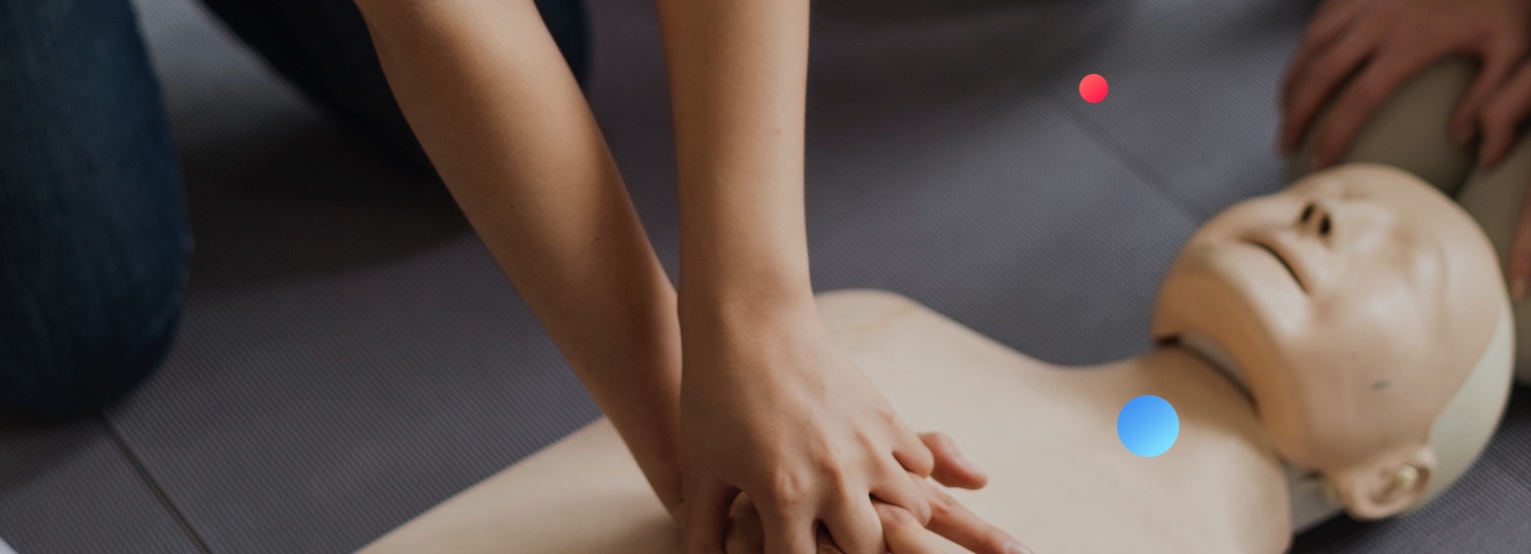
Use ‘DRSABCD’ and follow these steps:
What is sudden cardiac arrest?
Cardiac arrest occurs when the heart suddenly stops beating because of an electrical issue. Typically, a person in cardiac arrest will suddenly become unconscious and will not be breathing normally (irregular breathing or gasping noises) or stop breathing completely.
Your urgent help is needed
Don’t be a bystander, commit to take action and do something as ‘any attempt to resuscitate is better than no attempt” (ARC). What would you want a bystander to do if the emergency was your loved one?
Minutes save lives
Once the heart stops, the brain can’t get blood and can only survive for 3-4 minutes until the brain begins to die. To survive, the patient needs urgent emergency help from a bystander. Every 60 seconds of inaction reduces survival rate by 10%. The first responding bystanders most important job is to ring 000 for help, keep oxygenated blood circulating to the brain through CPR and if possible restart the heart with a defibrillator until an ambulance arrives (which on average takes 10 minutes).
CPR friendly DRSABCD Resuscitation Chart Download Now
If someone is in need, use ‘DRSABCD’:
Danger:
Make sure it is safe to approach by checking for any other dangers to yourself, bystanders, and the casualty. Examples of dangers could be:
• Road traffic
• Electrocution
• Water/slipping
• Bleeding/contamination
• Violent people/threatening family
Response:
Check for any response from the victim for 10 seconds. Use ‘COWS’ prompts such as:
• “Can you hear me?”
• “Open your eyes”
• “What’s your name?”
• “Squeeze my hand”
Send:
Immediately call 000 on speaker phone and:
• Ask for an ambulance
• Explain the situation and provide location (use your ‘Emergency+’ app if you have it)
• Don’t hang up, 000 will stay on the phone and coach you about what to do next until the ambulance arrives.
• Remember: ‘Any attempt at resuscitation is better than no attempt”
Airway:
Ensure the airway is open and clear of obstructions.
• Tilt head backwards for adults, lift the chin, and check breathing.
• Look for obstructions such as a tongue or vomit.
• Turn patient on side to clear airway if blockage, especially with vomit.
Breathing:
Check for normal breathing for 5-10 seconds. Irregular breathing or gasping sounds is not normal breathing. To assess:
• Look for chest rises
• Feel for chest rises
• Listen for breath
If Yes - normal breathing, place on side in recovery position and monitor as the situation may change suddenly.
If No - not breathing normally, start CPR
CPR:
Immediately, start CPR (cardio pulmonary resuscitation) for anyone who is unconscious and not breathing normally. In summary:
• Give 30 chest compressions (100-120 bpm at 1/3 depth of chest) followed by 2 breaths (tilting the head back for adults).
• Place the heel of your hand in the centre of the chest, on the sternum between the nipples, and the other hand on top.
• Push hard and fast in the centre of the chest (straight arms using your body weight helps reduce your fatigue).
• Again, compress the chest at a rate of 100-120 beats every minute (2 compressions every second). Pushing to the beat of Bee Gees “Staying Alive” can help.
• If in doubt, push harder and quicker. You can’t do any harm, might break a rib or two, but at least you may save a life.
• Get help from someone to assist with CPR when you start to get tired.
• If you are comfortable, provide 2 rescue breaths to every 30 compressions. For breaths, tilt head backwards to open the airway in adults, with the measure of success a raise in the chest.
• If in doubt, just use ‘hands only CPR’ and keep pushing the chest continuously at the rate of 2 compressions a second. Breaths are best if possible as the body only has about 4-6 minutes’ worth of oxygenated blood.
Defibrillator:
Get an Automated External Defibrillator (AED):
• On the patient, ideally, within 1-3 minutes as it can dramatically improve survival rates to as much as 95%.
• It does not need any training as it prompts you.
• Immediately turn it on and follow the voice prompts.
• Remove patient from any water and wipe down the chest.
• Remove conductive metals such as jewellery and wired bras. Note: females have lower survival rates due to modesty prudes and responders being too publicly correct.
• As instructed by the voice prompts, place the defibrillator adhesive pads on the chest of the patient in the ‘seat belt’ position (shoulder and waist).
• Will analyse the patient automatically every 2 minutes in between CPR and give you audio instructions whether to shock or not.
CPR friendly DRSABCD Resuscitation Chart Download Now
Babies & Infants
Use 2 finger compressions and only breathe puffs (with no head tilt). When using a defibrillator (AED), pads are placed with one on the chest and the other on the back. Consider checking to see if the defibrillator has any paedatric options.
When to stop CPR?
Continue CPR instruction from the 000 operator until an ambulance arrives and instructs you what to do. Typically prior to help arriving, once signs of life and normal breathing resume the patient should ideally be rolled on their side in the recovery position (to allow the airway to be clear in case of vomiting) and constantly monitored as their condition can change suddenly.
‘Any attempt to resuscitate is better than no attempt’ & follow the ‘DRSABCD’ steps.
What Next?
Want to save even more lives by being even more CPR friendly? Go to 30 minute training solution and also consider hosting a CPR friendly event. Spread the message, share the videos and what you have learnt.











